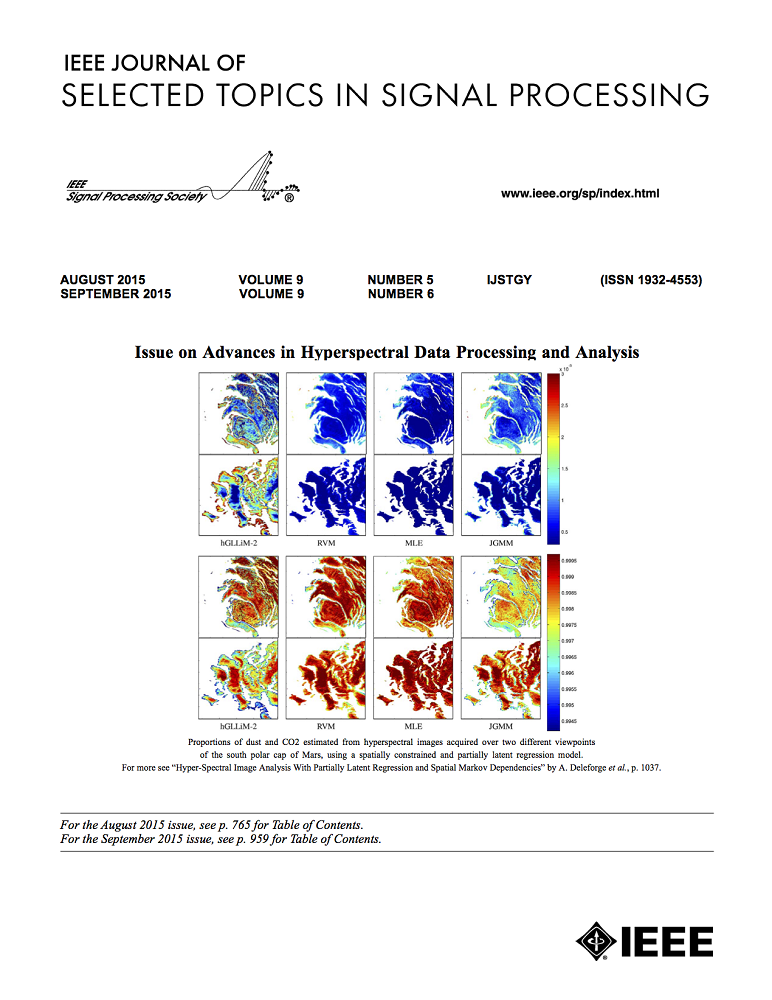基于CSMA/ ca的多用户MIMO无人机自组网联合公平与效率优化
IF 8.7
1区 工程技术
Q1 ENGINEERING, ELECTRICAL & ELECTRONIC
IEEE Journal of Selected Topics in Signal Processing
Pub Date : 2024-08-27
DOI:10.1109/JSTSP.2024.3435348
引用次数: 0
摘要
针对传统的时分多址(TDMA)、频分多址(FDMA)等多址方案无法满足大规模飞行自组网(fanet)对灵活性、吞吐量和接入延迟的要求,提出了一种公平高效的基于CSMA/ ca的MAC协议,利用多用户MIMO (MU-MIMO)实现不同无人机(uav)的并发上行传输。在本文中,我们首先提出了基于mimo的集成传感和反向散射通信模型,以实现地址分辨率,并利用最大似然估计实现信道估计。接下来,我们提出了一个分析模型来表征这种基于CSMA/ ca的MAC协议在MU-MIMO FANET中运行的饱和吞吐量和平均访问延迟。在此基础上,推导出饱和吞吐量和接入延迟的精确表达式。利用所建立的模型,对不同网络参数(包括总有效载荷、无人机数量和无人机接收机天线数量)下的饱和吞吐量和接入延迟性能进行了评估。数值结果表明,该协议具有较高的吞吐量和较低的访问延迟。本文章由计算机程序翻译,如有差异,请以英文原文为准。
Joint Fairness and Efficiency Optimization for CSMA/CA-Based Multi-User MIMO UAV Ad Hoc Networks
Since conventional multiple access schemes, such as time division multiple access (TDMA), frequency division multiple access (FDMA), et al., cannot meet the requirements on flexibility, throughput and access delay in large-scale flying ad hoc networks (FANETs), we propose a fair and efficient CSMA/CA-based MAC protocol to facilitate concurrent uplink transmissions from different unmanned aerial vehicles (UAVs) by leveraging multiple-user MIMO (MU-MIMO). In this paper, we first propose the MIMO-based integrated sensing and backscatter communication model to achieve address resolution and also realize channel estimation by leveraging maximum likelihood estimation. Next, we propose an analytical model to characterize the saturation throughput and mean access delay of this CSMA/CA-based MAC protocol operating in an MU-MIMO FANET. Moreover, we derive the accurate expressions of saturation throughput and access delay under the proposed model. By means of the developed model, we evaluate the saturation throughput and access delay performance with respect to different network parameters, including the total payload, the number of UAVs and the number of UAV receiver's antennas. Numerical results indicate that our proposed protocol achieves superior throughput and decreased access delay.
求助全文
通过发布文献求助,成功后即可免费获取论文全文。
去求助
来源期刊

IEEE Journal of Selected Topics in Signal Processing
工程技术-工程:电子与电气
CiteScore
19.00
自引率
1.30%
发文量
135
审稿时长
3 months
期刊介绍:
The IEEE Journal of Selected Topics in Signal Processing (JSTSP) focuses on the Field of Interest of the IEEE Signal Processing Society, which encompasses the theory and application of various signal processing techniques. These techniques include filtering, coding, transmitting, estimating, detecting, analyzing, recognizing, synthesizing, recording, and reproducing signals using digital or analog devices. The term "signal" covers a wide range of data types, including audio, video, speech, image, communication, geophysical, sonar, radar, medical, musical, and others.
The journal format allows for in-depth exploration of signal processing topics, enabling the Society to cover both established and emerging areas. This includes interdisciplinary fields such as biomedical engineering and language processing, as well as areas not traditionally associated with engineering.
 求助内容:
求助内容: 应助结果提醒方式:
应助结果提醒方式:


